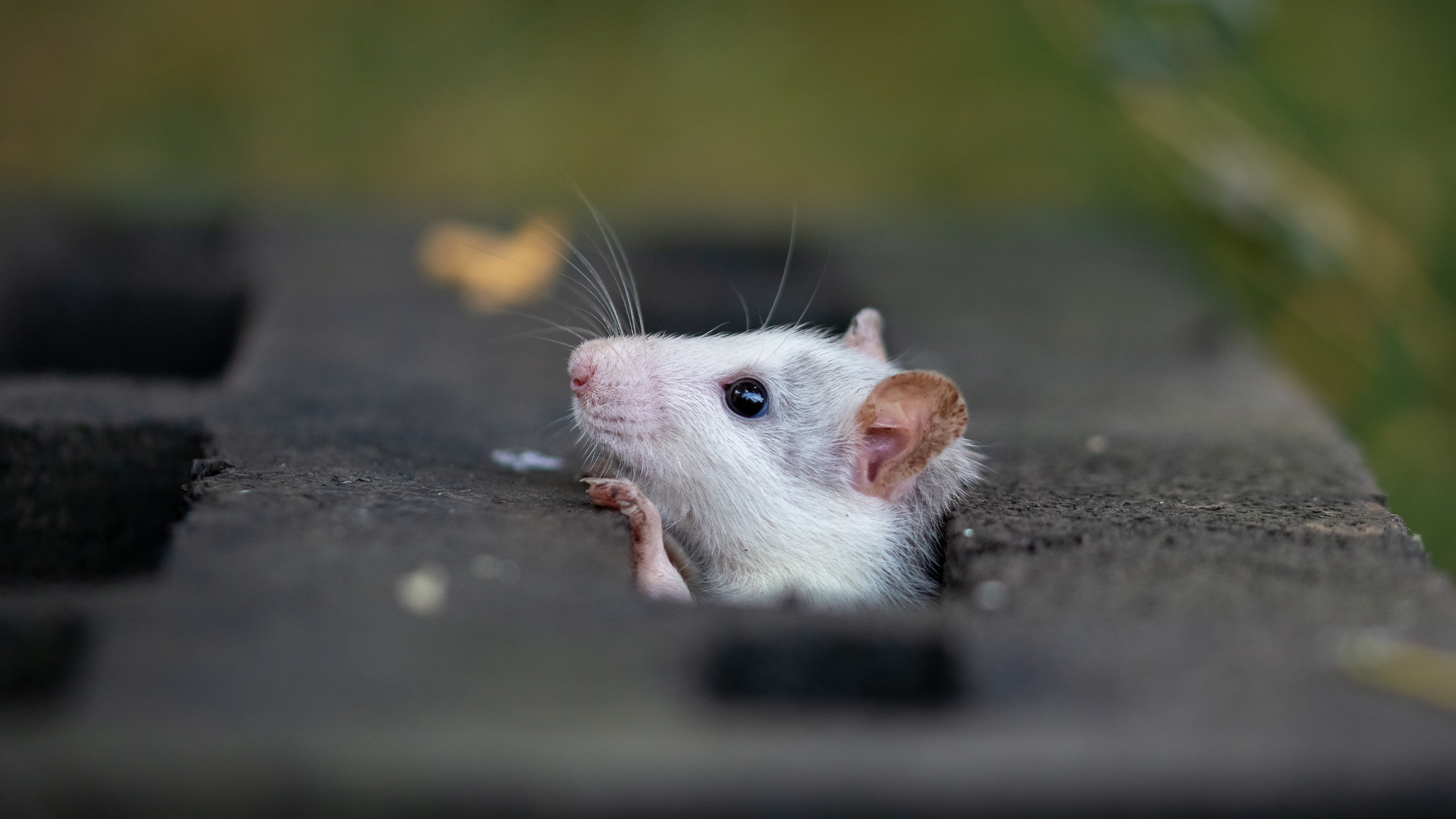

The ability to get lost in thoughts and use our imaginations to daydream might not be completely unique to humans. A study published November 2 in the journal Science found that rats can think about objects and places that are not right in front of them.
[Related: How science came to rely on the humble lab rat.]
Imagining locations that are away from our current position is a component of both memory and conjuring up possible future scenarios. If animals have this ability, they could have a form of imagination that is similar to our species.
“The rat can indeed activate the representation of places in the environment without going there,” Chongxi Lai, a co-author of the study and engineer and neuroscientist at Howard Hughes Medical Institute, said in a statement. “Even if his physical body is fixed, his spatial thoughts can go to a very remote location.”
To learn more, Lai and a team at Howard Hughes Medical Institute in Maryland designed a series of experiments to see if rats can use their thoughts to imagine going towards a specific location or moving a remote object.

Reading a rat’s mind
When humans and rodents experience events or visit places, specific neural activity patterns are activated in their hippocampus. This area of the brain is responsible for spatial memory and stores mental maps of the rat’s world. It is also involved in recalling past events and imagining future situations. To recall memories, specific patterns related to places and events are generated in the hippocampus. Chimpanzees have been shown to have the ability to pretend, but scientists are still figuring out how chimps and other non-human animals think.
To peer inside of a rat’s brain and look at these brain patterns, the team developed a real-time “thought detector.” This system measures neural activity and translates what it means using a brain-machine interface (BMI).
The BMI produced a connection between the electrical activity occurring in the rat’s hippocampus and the animal’s position in a 360-degree virtual reality arena. It allowed the researchers to see if a rat can activate hippocampal activity to think about a location in the virtual arena without physically traveling there.
A rat ‘thought dictionary’
With the BMI in place, the team worked to decode the brain signals in the rats. They built a “thought dictionary” of what the brain activity patterns looked like when the rat was traveling through the virtual arena in the experiment.
To do this, the rat was harnessed into a virtual reality system. As the rat walked on a spherical treadmill, its movements were translated onto a 360-degree screen. The rat was rewarded when it navigated towards its goal.
While the rat walked on the treadmill, the BMI system recorded the activity occurring in the hippocampus. The team saw which neurons were activated when the rat navigated the virtual arena to reach each goal. These signals provided them with the basis for a real-time translation of what was going on in the hippocampus.
With the thought dictionary set up, the team disconnected the treadmill. The rat was rewarded for the first step of reproducing the hippocampal activity pattern that was associated with walking towards a goal location.
The Jumper task and the Jedi task
Next, they designed two different tasks for the rats to perform–the Jumper task and the Jedi task.
In the Jumper task, the BMI translated the rat’s brain activity into motion on a screen. The animal was essentially using its thoughts to find a reward by thinking about where it needs to go to obtain it. This is a thought process similar to traveling to work or school and imagining the buildings and places we will pass along the way.
[Related: We probably have big brains because we got lucky.]
The Jedi task had a rat hypothetically move an object to a location in its mind. The rat was fixed in a virtual place, but controlled its hippocampal activity to envision moving the object towards a goal. This is similar to how a person sitting on a couch imagining getting up and refilling a water glass in a kitchen. The team then changed the location of the rat’s goal, which required it to produce activity patterns associated with the new location.
They found that the rats can precisely and flexibly control their hippocampal activity. Surprisingly, they could sustain this activity and hold their thoughts on a given location for many seconds. This time frame is similar to the amount of time humans can take to relive past events or imagine new scenarios.
“The stunning thing is how rats learn to think about that place, and no other place, for a very long period of time, based on our, perhaps naïve, notion of the attention span of a rat,” Tim Harris, a study co-author and biophysicist from Howard Hughes Medical Institute, said in a statement.
According to the team, this study shows how BMI can be used to probe hippocampal activity and could be a new way to study this critical region of the brain. BMI is increasingly used in prosthetics, and this new work could be used to develop devices based on these same principles.
